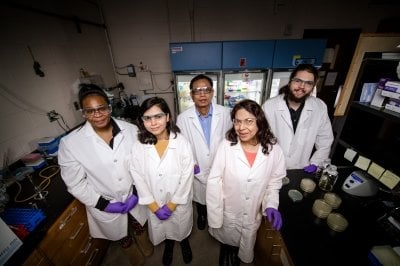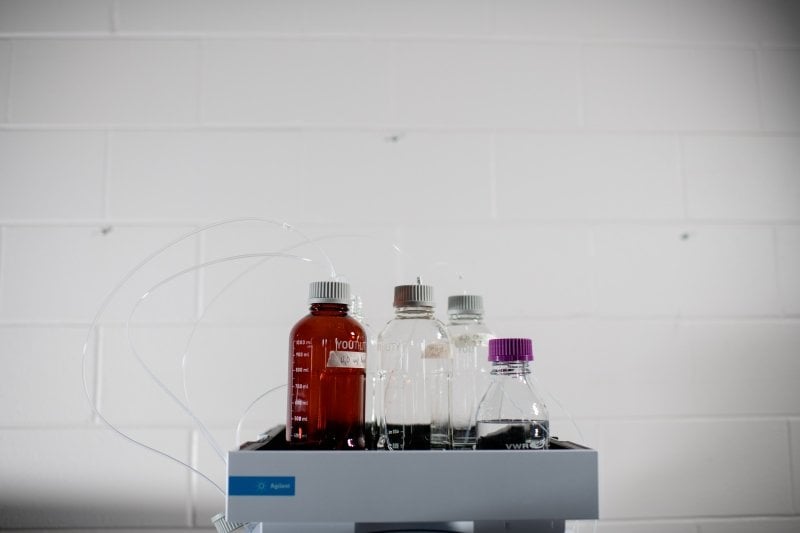Biochemists developed a catch and release technique to find the specific protein they’re
fishing for.
The technique is explained in a new paper published in the Journal of Biological Chemistry. A team of biochemists from Michigan Technological University, including students,
did the research, which is led by Tarun Dam, associate professor of chemistry.
“Protein purification is a multibillion-dollar industry,” Dam said, explaining that
proteins are important for studying everything from cancer to allergies to vaccines.
“Unless you purify a protein, you don’t know what it can do. We set out to improve
that process.”
Go Fish…For Proteins
Much like fishing, Dam and his team’s technique comes down to selecting the right
lure and knowing the habits and habitat of what they’re baiting. They call their system
CaRe, short for capture and release, and it follows four steps.
First, the team has to capture the protein they’re looking for. They do this by picking
the lure: The tackle box is full of ligands, which are molecules with pincer-like
arms that can bind proteins between the prongs. Much like fish that prefer different
flies, lures or live bait, different proteins bind better with different ligands.
“The hook needs to be a specific capturing agent,” Dam explained, adding that the
second step is to isolate the bound protein. “Now we need the centrifuge. Once the
protein is caught, the molecule’s weight becomes heavier, so they come down in solution.”
The third step is to remove the isolated ligand-protein complex— much like getting
the fish into the boat — and the fourth step is to get the hook out and separate the
ligand and protein. Once separated, the protein stands alone, a purified end product.
“No technique is 100% perfect,” Dam said, noting that isolating low levels of a protein
is akin to trawling for walleye where the sunfish hang out. Also, just like real lures,
some proteins are picky and some ligands attract everything; a challenge and delight
that keeps many people in waders and lab coats.

“What we are most excited about is the simplicity of the technique,” Dam said.
CaRe can isolate and separate out proteins in a day or two compared to the greater
expense in both time and cost of current protein purification systems.
Glycoproteins, Cancer and Immunotherapy
Dam and his Michigan Tech collaborators, notably research assistant professor Purnima
Bandyopadhyay, were able to develop CaRe because of the nature of the proteins. Alongside
carbohydrates and fats (lipids), proteins are an important building block of living
organisms.
About 60% of proteins are glycoproteins, meaning they have a sugar-based chain attached
to them, and for decades, researchers thought the chains were junk structures. But
as often happens in research over time, the sugary chains proved to be a key part
of how proteins interact with their environment and the cells around them.
In his primary research, Dam explores a specific protein’s interactions. Galectin-3,
or simply Gal-3, is an important biomarker for thyroid cancer and a multitasking protein. Bandyopadhyay makes recombinant Gal-3 and its mutants in the lab. As Dam developed
his Gal-3 research and needed to screen different proteins, he was set back by the
cost and cumbersome processes of protein purification. So, he asked Bandyopadhyay,
can we go fishing?
Grants and Funding
National Science Foundation NSF 1608537
In addition to his own work, Dam is excited to see other labs apply the CaRe technique.
It simply requires basic equipment and the chemistry equivalent of old fishing wisdom
to know what lure catches what. Whether it’s sorting out cancer-related glycoproteins
and proteins like Gal-3 or purifying proteins for immunotherapy treatments, luring
the right molecules becomes as simple as catch and release fishing.

Michigan Technological University is a public research university, home to more than
7,000 students from 54 countries. Founded in 1885, the University offers more than
120 undergraduate and graduate degree programs in science and technology, engineering,
forestry, business and economics, health professions, humanities, mathematics, and
social sciences. Our campus in Michigan’s Upper Peninsula overlooks the Keweenaw Waterway
and is just a few miles from Lake Superior.
